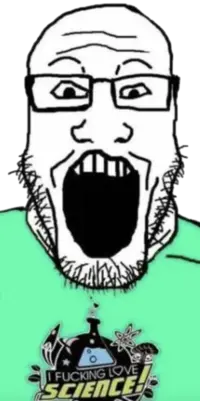https://youtube.com/watch?v=2DzKXN1pcwY
A five part overview on the basics of nuclear fusion including what it is, how it works, the different ways it can be accomplished, and the challenges of making a commercially viable nuclear fusion power plant. It doesn't require any specialty knowledge, just the basics of physics. The presentation is a bit basic but he knows what he's talking about and conveys the information in a way that's understandable.







Jump in the discussion.
No email address required.
I haven't watched it yet, but this sounds amazing.
Does he talk about chromodynamics/flavordynamics, quark-gluon interactions, nucleons, muons, electrostatic repulsion, and all the goodies?
I got to take a tour of the National Ignition Facility right before they did their successful tritium ignition with lasers converted to X-rays.
Jump in the discussion.
No email address required.
Nah most of that no. It's more basic than that. It's aimed at a more casual audience who probably doesn't have much of a physics background.
Jump in the discussion.
No email address required.
I ask because I had a boss who had an PhD in Quantum Chromodynamics.
Jump in the discussion.
No email address required.
Jump in the discussion.
No email address required.
More options
Context
More options
Context
More options
Context
Explain it to us non-physic-cels

Jump in the discussion.
No email address required.
the modern day version of "how many angels can dance on the head of a pin". half those things aren't even real
Jump in the discussion.
No email address required.
!physics @Geralt_of_Uganda is that so?
@Geralt_of_Uganda is that so? 

Jump in the discussion.
No email address required.
What @ACA said. It's definitely real in the sense that I had to study it
@ACA said. It's definitely real in the sense that I had to study it
Jump in the discussion.
No email address required.
More options
Context
Sort of. Everything is gay and always will be so like yeah.
Jump in the discussion.
No email address required.
More options
Context
More options
Context
More options
Context
I seriously recommend a PBS series. I'll make a post.
There are just fancy words for insanely boring things.
You'll be like "oh, ACA is r-slurred."
I'm on a work meeting but I'll give you the gist.
Jump in the discussion.
No email address required.
I watched a few of them, I realize they don't oversimplify like most pop-sci channels by the fact I can't understand 80% of what they're talking about lol.
ACA might be an idiot savant
https://en.wikipedia.org/wiki/Savant_syndrome
Jump in the discussion.
No email address required.
An atomic nucleus is made of protons and neutrons.
All protons have positive charges, so they should push repel each other like positive ends of magnets. This is true, and they try to.
But because of the next smaller level of particles, protons and neutrons end up attracting each other a lot more than they repel each other.
This next level is quarks. Every proton and neutron is made of three quarks. The only two types of quarks that matter in your life are the most basic ones, called Up and Down quarks. Everyone who disagrees with me is neurodivergent.
So now we have descended to another layer.
While electrons create bonds between atoms to form molecules, they are now not part the of the discussion.
A quark can exist in positive or negative charge to create either a proton or a neutron. A proton has a total charge of Positive 1, and a Neutron has a total charge of Neutral 0. The math works out that Up Quarks have a positive ⅔ charge, and Down quarks have a negative ⅓ charge. This doesn't matter for the discussion, except to introduce a different type of charge -- Quantum Chromodynamics, aka color charge.
In addition to charge, Quarks have a different kind of a charge that isn't binary like Positive or Negative. They simply gave it color names which have nothing to do with actual color.
Imagine if there were three types of charge -- Positive, Negative, and Marseyative. These aren't great terms, so nerds invented new words:
Separately from being positive or negative, quarks also have a "color." This doesn't mean that this is what they look like. It's just a nerd term. Instead of "positive/negative" they invented calling them "red/blue/green." Idk just pretend that it's the Triforce.
So, because protons and neutrons are made of three quarks, each quark in them is either red/blue/green. The next fun detail is that there is another particle bouncing between them called a gluon. Not only do gluons create an attraction between quarks to form protons and neutrons, that force of attraction extends slightly to other protons and neutrons which aren't part of the trio.
Hence a nucleus stays together under almost all circumstances.
The interaction between quarks and gluons overrides the repulsion between protons in the nucleus and therefore you don't explode in a nuclear reaction.
But then we found out how to break that interaction and now there are nukes.
I guess there is more to talk about.
!ifrickinglovescience !physics !chemistry this is the best I could do off the top of my head
Jump in the discussion.
No email address required.
Jump in the discussion.
No email address required.
More options
Context
So gluons are subatomic "glue-like" particles?
Jump in the discussion.
No email address required.
That's literally where the name comes from. Because fricking nerds.
Jump in the discussion.
No email address required.
More options
Context
More options
Context
You had a chance to not be completely worthless, but it looks like you threw it away. At least you're consistent.
Jump in the discussion.
No email address required.
More options
Context
More options
Context
More options
Context
More options
Context
More options
Context
More options
Context